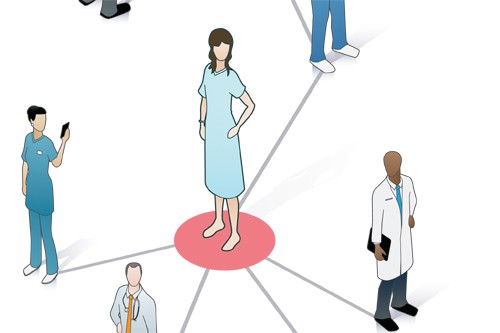
The patient is at the heart of everything we do’ is a phrase so often quoted by the pharma industry that its meaning has become diluted.
It rightly suggests an industry doing its upmost to develop the best medicines it can for the patient, but just what does it mean to put the patient at the heart of a pharma strategy, and what can a ‘patient-centric’ relationship give to both a company, and its consumer?
Patient-centricity is an evolving and increasingly important element of pharma’s business model, but one that has been somewhat ignored by the industry as a whole.
The patient is many things to pharma – both its business and consumer – but traditionally the patient had very little understanding about the choice of medicines on the market, and was historically prescribed medicines with little consultation. That is why in Europe it was the payer/the prescriber that was the true consumer, with the patient taking what the healthcare professional thought best, and perhaps most cost-effective.
It’s long been an odd situation. Today it’s difficult to imagine having someone you don’t know buy a product for you from a company you also don’t know, then having someone else tell you how to use it, all the while giving you little to no choice over the product itself. It’s especially unusual when you consider that this product could save, extend or increase your enjoyment of life.
But now, driven to a large part by the way the internet has opened up and democratised information, the paternal era of doctors – and pharma – deciding what is best for the patient is fast becoming an outmoded strategy. Instead patients are becoming more involved in their care, changing the long-term dynamic between patient and doctor. This is especially true among the younger generation of patients with chronic, lifelong conditions who want more control over their care, but also those involved in caring for older friends and relatives.
Reputational value
But for pharma to fully follow this direction of travel a major problem must be overcome – the industry’s reputation.
There are rays of hope that things are changing. The industry’s standing in the eyes of patient groups appears to have risen over the last 12 months, albeit from a very low base. A recent survey by PatientView of 1,150 patient’s groups drawn from 58 countries found 39% of respondents thought pharma had either an ‘excellent’ or a ‘good’ corporate reputation last year.
In 2013 just 35.4% said the same, with a similar percentage also recorded in 2012. But this is still below the 2011 score, when 41% of respondents gave an ‘excellent’ or ‘good’ rating.
Nevertheless, the industry still came in a lowly sixth among the eight healthcare-industry sectors covered by the survey, with only not-for-profit and for-profit health insurers ranking lower. Retail pharmacists came top of this list, with medical device companies and private healthcare services second and third respectively.
From marketing fines to drug pricing questions, the issues underlying these sorts of findings are indicative that it will take more than a quick fix to overcome. But problems have included multi billion dollar fines in the past three years for market abuse and off-licence promotion, as well continuing questions over drug pricing schemes.
Being patient-centric can potentially help here, but the problem is getting patients and patient groups on board. Many patient groups do of course receive large donations from the pharma industry, but the vast majority remain fiercely independent – simply throwing money at groups is not enough to help gain trust.
Pharma knows this, and has taken steps to help ease these concerns: in the US, it is now common practice that pharma will help poorer patients finance their drug bills through coupons and vouchers, while the industry as a whole has also begun a real push into philanthropic ventures, such as handing out free medicines to those affected by natural disasters, as well as donating millions of dollars for relief and aid in countries like Haiti and Japan.
More recently, firms such as GSK and Janssen have gained kudos by working with governments to create a new Ebola vaccine, even though the costs for this will likely not be reimbursed by sales. This is certainly helping pharma appear better in the eyes of the public, but there is still more work to do.
As the rise of the more engaged patient continues apace, pharma will need to sit up and listen to what its consumers what, just as any industry in any marketplace must expect. The real focus of patient-centricity should fall on to real-world experiences – with the consent of patients – and is what the great white hope of engagement really hangs upon.





